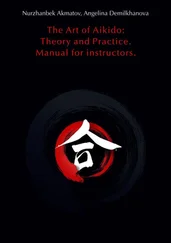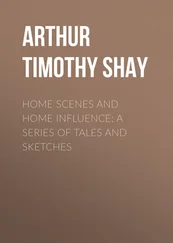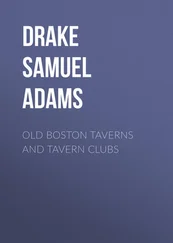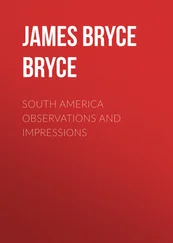Samuel Benjamin - Art in America - A Critical and Historial Sketch
Здесь есть возможность читать онлайн «Samuel Benjamin - Art in America - A Critical and Historial Sketch» — ознакомительный отрывок электронной книги совершенно бесплатно, а после прочтения отрывка купить полную версию. В некоторых случаях можно слушать аудио, скачать через торрент в формате fb2 и присутствует краткое содержание. Жанр: foreign_antique, foreign_prose, на английском языке. Описание произведения, (предисловие) а так же отзывы посетителей доступны на портале библиотеки ЛибКат.
- Название:Art in America: A Critical and Historial Sketch
- Автор:
- Жанр:
- Год:неизвестен
- ISBN:нет данных
- Рейтинг книги:4 / 5. Голосов: 1
-
Избранное:Добавить в избранное
- Отзывы:
-
Ваша оценка:
- 80
- 1
- 2
- 3
- 4
- 5
Art in America: A Critical and Historial Sketch: краткое содержание, описание и аннотация
Предлагаем к чтению аннотацию, описание, краткое содержание или предисловие (зависит от того, что написал сам автор книги «Art in America: A Critical and Historial Sketch»). Если вы не нашли необходимую информацию о книге — напишите в комментариях, мы постараемся отыскать её.
Art in America: A Critical and Historial Sketch — читать онлайн ознакомительный отрывок
Ниже представлен текст книги, разбитый по страницам. Система сохранения места последней прочитанной страницы, позволяет с удобством читать онлайн бесплатно книгу «Art in America: A Critical and Historial Sketch», без необходимости каждый раз заново искать на чём Вы остановились. Поставьте закладку, и сможете в любой момент перейти на страницу, на которой закончили чтение.
Интервал:
Закладка:
Art in America: A Critical and Historial Sketch
PREFACE
THE aim of this book has been to give a historical outline of the growth of the arts in America. But while this has been the dominating idea in the mind of the writer, criticism has necessarily entered, more or less, into the preparation of the work, since only by weighing the differences or the comparative merits of those artists who seemed best to illustrate the various phases of American art has it been possible to trace its progress from one step to another.
It is from no lack of appreciation of their talents that the author has apparently neglected mention of the American artists resident in foreign capitals – like Bridgman, Duveneck, Wight, Neal, Bacon, Benson, Ernest Parton, Millet, Whistler, Dana, Blashfield, Miss Gardner, Miss Conant, and many others who have done credit to American æsthetic culture. But it was necessary to draw the line somewhere; and to discuss what our artists are painting abroad would have at once enlarged the scope of the work beyond the limits of the plan adopted. An exception has been made in the case of our sculptors, because they have so uniformly lived and wrought in Europe, and so large a proportion of them are still resident there, that, were we to confine this branch of the subject only to the sculptors now actually in America, there would be little left to say about their department of our arts.
The author takes this occasion cordially to thank the artists and amateurs who have kindly permitted copies of their paintings and drawings to be engraved for this volume.
I.
EARLY AMERICAN ART
THE art of a nation is the result of centuries of growth; its crowning excellence does not come except when maturity and repose offer the occasion for its development. But while, therefore, it is yet too soon to look for a great school of art in America, the time has perhaps arrived to note some of the preliminary phases of the art which, we have reason to hope, is to dawn upon the country before long.
As the heirs of all the ages, we had a right to expect that our intellectual activity would demand art expression; while the first efforts would naturally be imitative rather than original. The individuality which finds vent in the utterance of truth under new conditions is not fully reached until youth gives place to the vigorous self-assertion of a manhood conscious of its resources and power. Such we find to have been the case in the rise of the fine arts in this country, which up to this time have been rather an echo of the art of the lands from which our ancestors came, than distinctively original. Our art has been the result of affectionate remembrance of foreign achievement more than of independent observation of nature; and while the number of artists has been sufficiently large, very few of them stand forth as representatives or types of novel methods and ideas; and those few, coming before their time, have met with little response in the community, and their influence has been generally local and moderate, leading to the founding of nothing like a school except in one or two isolated cases. But many of them, especially in the first period of our art, have shared the strong, active character of their time; and, like the heroes of the Revolution, presented sturdy traits of character. And thus, while the society in which they moved was not sufficiently advanced to appreciate the quality of their art, they were yet able to stamp their names indelibly upon the pages of our history. But within the last few years the popular interest in art has grown so rapidly in the country – as indicated by the establishment of numerous art schools and academies, art galleries, and publications treating exclusively of art subjects, together with many other significant proofs of concern in the subject – that it seems safe to assume that the first preparatory period of American art, so brilliant in many respects, is about closing, and that we are now on the threshold of another, although it is only scarcely three centuries since the first English colonists landed on our shores. The first professional artist of whom there seems to be any record in our colonial history was possessor of a title that does not often fall to the lot of the artist: he was a deacon. This fact indicates that Deacon Shem Drowne, of Boston town, was not only a cunning artificer in metals and wood-carving, as the old chronicles speak of him, but also a man addicted to none of the small vices that are traditionally connected with the artistic career; for people were very proper in that vicinage in those days of austere virtue and primness, and deacons were esteemed the very salt of the earth.
During the first century of our colonial existence local painters, often scarcely deserving the name, are also known to have gained a precarious livelihood by taking meagre portraits of the worthies of the period, in black and white or in color. We should know this to have been the fact by the portraits – quaint, and often rude and awkward – which have come down to us, without anything about them to indicate who the artists could have been who painted them. Occasionally a suggestion of talent is evident in those canvases from which the stiff ruffles and bands of the Puritans stare forth at us. Cotton Mather also alludes to a certain artist whom he speaks of as a limner. But in those times there was, however, at best no art in this country, except what was brought over occasionally in the form of family portraits, painted by Vandyck, Rembrandt, Lely, or Kneller. These precious heirlooms, scarcely appreciated by the stern theologians of the time, were, however, not without value in advancing the cause of civilization among the wilds of the Western world. Unconsciously the minds of coming generations were influenced and moulded by these reminders of the great art of other lands and ages. No human effort is wasted; somewhere, at some time, it appears, as the seed sown in October comes forth anew in April, quickened into other forms, to sustain life under fresh conditions.
The first painter in America of any decided ability whose name has survived to this day was John Watson, who executed portraits in Philadelphia in 1715. He was a Scotchman. It is to another Scotchman, who married and identified himself with the rising fortunes of the colonies, that we are perhaps able to assign the first distinct and decided art impulse in this country. And for this we are directly indebted to Bishop Berkeley, whose sagacious eye penetrated so far through the mists of futurity, and realized the coming greatness of the land.
Berkeley is associated with the literature and arts of America in several ways. He aided the advance of letters by a grant of books to Yale College, and by founding the nucleus of what later became the Redwood Library at Newport; thus indirectly suggesting architectural beauty to a people without examples of it, for in 1750 a building was erected for the library that sprang from his benefactions. The design was obtained from Vanbrugh, one of the greatest architects of modern times; and although the little library is constructed only of wood and mortar, its plan is so pleasing, tasteful, and harmonious, that it long remained the most graceful structure in the colonies; and even at this day is scarcely equalled on the continent as a work of art by many far more costly and ambitious constructions after the Renaissance order. And, finally, we owe to Bishop Berkeley the most notable impulse which the dawning arts received in this country when he induced John Smybert, the Scotchman, to leave London in 1725 and settle in Boston, where he had the good fortune to marry a rich widow, and lived prosperous and contented until his death, in 1751. Smybert was not a great painter. If he had remained in Europe his position never would have been more than respectable, even at an age when the arts were at a low ebb.
Читать дальшеИнтервал:
Закладка:
Похожие книги на «Art in America: A Critical and Historial Sketch»
Представляем Вашему вниманию похожие книги на «Art in America: A Critical and Historial Sketch» списком для выбора. Мы отобрали схожую по названию и смыслу литературу в надежде предоставить читателям больше вариантов отыскать новые, интересные, ещё непрочитанные произведения.
Обсуждение, отзывы о книге «Art in America: A Critical and Historial Sketch» и просто собственные мнения читателей. Оставьте ваши комментарии, напишите, что Вы думаете о произведении, его смысле или главных героях. Укажите что конкретно понравилось, а что нет, и почему Вы так считаете.












